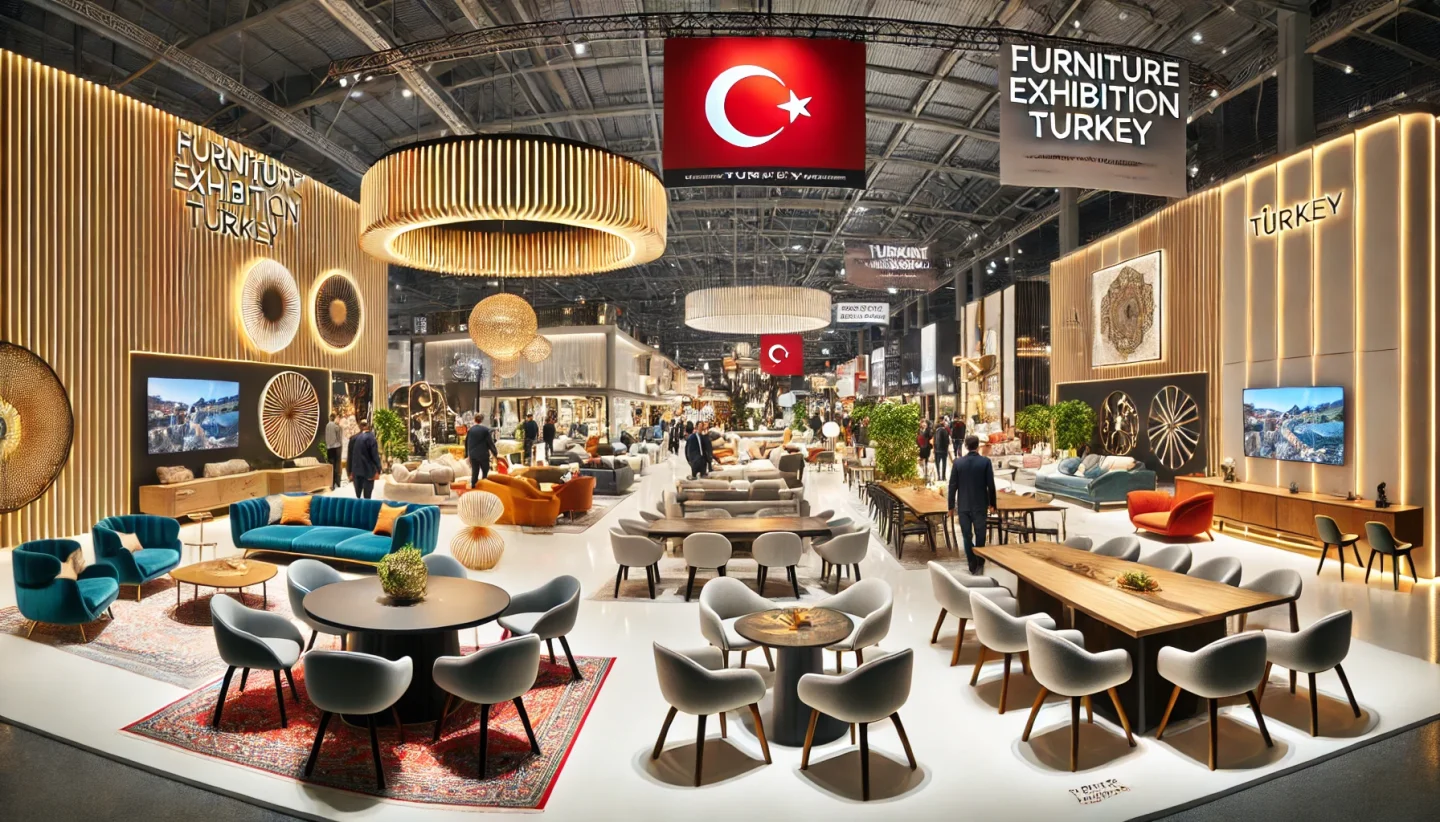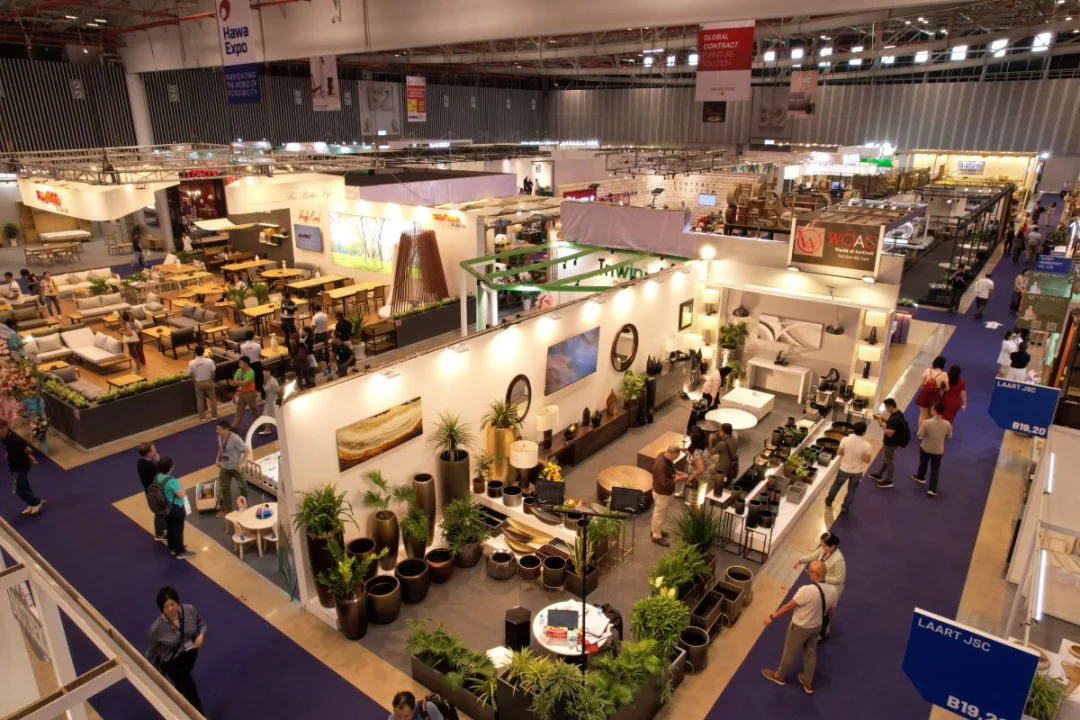Turkey hosts several prestigious furniture exhibitions every year, attracting industry professionals, designers, and buyers from around the globe. These events showcase the latest trends, innovative designs, and sustainable solutions in the furniture sector. Prominent exhibitions such as IFF (Istanbul Furniture Fair) and CNR IFF take place in Istanbul, providing a platform for leading manufacturers and emerging brands to exhibit their collections.
These fairs are significant not only for promoting Turkish craftsmanship but also for fostering international collaborations and business opportunities. With a focus on modern design, quality materials, and functional aesthetics, Turkish furniture exhibitions have become a global hub for furniture trade and innovation.
1. Introduction to Turkish Furniture Exhibition Industry
Introduction The furniture exhibition industry is one of the significant marketing tools for promoting the ancient artistic expression as well as the contemporary reflections of the Turkish craft and design identity. In order to position itself in the global competition, Turkey possesses a well-established exhibition strategy. Located between the Occident and the Orient, Turkey has created its image through different trade fairs of decorative arts, design, and modern furniture exhibitions abroad and at home. Turkish furniture and decorative arts have been showcased in various international exhibitions. Until 1942, Turkish and Islamic works of art were no longer put on display. Then, a significant exhibition was realized, giving emphasis to modern furniture design as a lifestyle, which is the first overseas event of decorative arts and multidimensional design beyond the traditional manners of the preparation of aesthetically pleasing art or craft.
At a time when the sector has increasingly made a name for itself in the local and international markets, the figures prove the importance of the furniture exhibitions as an important reference instrument. By the targets of Strategic Marketing, Turkish furniture and design exhibitions are the priority actors in the marketing strategy for Turkey's furniture and design vision. Facing mounting economic and cultural pressures from unyielding competitors, the Turkish furniture industry is in the midst of a modernization process in order to help ensure the future growth of their companies. Elevating craftsmanship to the level of art, collaboration among designers is realized in this process. During the early era, the Turkish National Committee for the ICFF was formed by the delegates of furniture manufacturers at various destination points in order to coordinate and set up the activities aiming to participate in significant design events.
2. Historical Development of Furniture Design in Turkey
The design and craftsmanship of furniture, which reflects the spirit of an age, has a long history. Since ancient times, one function of furniture has been to beautify living spaces, even as it performs functional tasks. Furniture design, especially in societies whose architectural styles gained ascendancy in history, has been closely associated with architecture. Furniture, designed in the communal consciousness based on specific standards of beauty and comfort, has greatly differed in different societies and eras, parallel to nuances in culture. In this sense, the examination of the course of furniture design reflects the cultural heritage and innovation in design for a specific society.
Turkey is a country that is home to all the civilizations, religions, traditions, and cultures of Asia, Europe, and Africa. Despite the acceptance of Western civilization and industrialization into social and cultural life, the peculiar character of Turkish society may be seen in the manifestations of this cultural wealth, and the influence from Turkey’s original cultural heritage on these practices is apparent. In this rich and diverse culture, furniture design has been quite significantly influential. The oldest existing evidence of human beings living on the lands of Turkey stems from the Stone Age. The effects of Mesopotamian and Egyptian civilizations are observed in works of art and architecture dating back to those periods. In the historical geography of Turkey, Hittites, Urartians, Lycians, Karians, and Phrygians are known as the founders of principalities or states with cities, and Anatolian civilizations begin with them. These societies created the first samples of urban culture, capturing wealth.
In the furniture of the Seljuk period, the traditional understandings of the Middle East and Anatolia’s cultural wealth are seen together. The Turkish furniture of the Seljuk period displays common characteristics with the Bedouin products of this geography. Characteristic features of Seljuk furniture include the extraordinary and extravagant decoration that covers the goods. Master carpenters and craftsmen left distinctive proof starting from those dates. From the Timur period to the Empire, the cartographers with the title of 'Kahracı' started furnishing the royal palaces, and famous clockmakers of this period, who earned reputations, started performing the Vakıf registers, such as the construction of the hu in their mansions. Hálatü’l-hatejín on the subject that some of the carpets that reveal Abdulcelil Levni that Şekerzade Mehter Hancı Hamdi Solak Şeyh on the list of workers mentioned in this work is also mentioned in the writings of Ottoman furniture and Twisted Silahdar Miskin Mehmed Dede on the new work of the age. In the furniture of the Ottoman Empire, the creative concepts and the masterful labor of the craftsmen were strong evidence of Ottoman art. Since the craftsmen were the intermediaries that communicated and applied the ideas of the palace or mansion owner, it is possible to find the characteristics and social structure of the period in the works.
3. Innovations and Trends in Contemporary Turkish Furniture Design
The 21st century reached the furniture industry with rapid developments not just in fabrics and furnishing, but in designs and innovation. This resulting contemporary Turkish furniture design is known for its progressive designs with a plethora of conventional feature styles that weave in and out of modern trends. This metal-seeped popularity of furniture designs may be a result of global interior design movements or technological advancements. The contemporary Turkish furniture design blends modern and traditional styles and is also a result of skills and craftsmanship established centuries ago, with materials and technology updated to support rising needs. One dimension that should also be carved out under contemporary furniture designs is the rising importance of ecological impact. Many of these brands and furniture designers have begun opting for eco-friendly design: products that are not only made with non-toxic materials but are well thought out and aesthetic in their exterior; i.e., recycled, biodegradable materials, supporting local resources and products, and handmade.
The products made are a mix of modern contemporary and traditional styles, from material to design, made by fusing techniques of technology and craftsmanship. Product innovation and experiments are a part of ergonomic design thinking as well as a part of aesthetic design approaches. Designs explore functionality, utility, and durability with a blend of aesthetic and traditional craftsmanship; i.e., mixed material designs, products with different or innovated finishes, floral and traditional or bold designs, contemporary versus comfort. Three trends at the intersection of contemporary design and Turkish furniture context: brands and furniture designers that have been shaping contemporary Turkish furniture designs primarily operate in urban dwelling markets, with their products appealing to the increasing number of flats and city-home architecture. While furniture needs vary from one person to another, many of these designs are about aesthetics and much less about 'habit.' Aesthetics are also a product of functionality. From coffee tables to nameplates used in houses, the designs have become more flexible and context-based; they also serve as display, storage, or conversation pieces.
4. Impact of Turkish Furniture Exhibitions on Global Design Trends
During this period, Turkish furniture and exhibitions, in particular, attracted international attention. Exhibitions are also platforms for cultural exchange, usually events marked by appearances of diplomats from participating countries. A considerable number of foreign furniture traders looked forward to these biennial exhibitions, which gave them the chance to see the latest Turkish designs and discuss business—possibly placing orders or investing in Turkish factories to mass-produce those designs. Several Turkish designers have become known to the world thanks to those opportunities to collaborate with global brands. For foreign markets, they are authorized designers of Turkish design. Fairs and exhibitions also helped bring local craftsmen and designers together in certain cities, thus contributing to the emergence and establishment of fresh design trends. A Turkish piece of craftsmanship is an intricate, symmetrical handmade ornamentation produced through special techniques. Hundreds are produced every month in Turkish ateliers and workshops. The Istanbul Furniture Fair and SIF International Izmir Furniture Fair are important in establishing and maintaining these two characteristics. Exhibitors and product purchasers told us that the aesthetic and identity lines explained the preference for the Istanbul Fair, while the Izmir event was selected for the comfort line. Both fairs are also popular with domestic industry leaders in terms of the trends and products they display. Many Turkish manufacturers have expressed that their trade relations start at these fairs. This means they are important platforms for the Turkish furniture industry to expand in new markets. Some industry-leading companies have been evaluating stands as elements of brand strategies in order to obtain international brand positioning. However, a number of critics have pointed to issues such as the rapid expansion of the fairs and increased standardization of the products being displayed. The development in competitive trends with other similar exhibitions organized all over the world has been the highlight of this program.
5. Conclusion and Future Prospects
Over the centuries, furniture design has followed a parallel course between development in technology and trends in socio-cultural behavior. Turkey is in the process of making furniture with high added value. It has a rich history of wood and carpentry skills, and continues to manufacture modern furniture that reflects this cultural accumulation. Turkish furniture design appears to have a bright future if it maintains its balance between the local and universal, between the traditional and the contemporary. The craftspeople who created their work with their hands in the past are now replaced by a common synthesis of machine lines and serial production with international connections and a design team working with hand labor. The furniture sector in Turkey has a very large capacity, producing in high volume, primarily for export. The Turkish furniture sector has made a breakthrough in timber imports and exports, exporting to more than 220 countries. When crucial transformation triggers that will shape the future of furniture design in Turkey are evaluated, digital transformation, education and raw materials policies are taken as a reference. Aspects such as digital transformation, aesthetics, culture, diversity and universal quality can be further increased in Turkish furniture design, even if they are old. Yet approaches for a well-established identity would enable added value that is inclusive of contemporary spirit in the forthcoming requirements of rapidly developing geographical and cultural boundaries, in-depth international competition as an important alternative. It is important to be clear about the position of education. The designer or manufacturer employees should have theoretical and technical knowledge, knowledge of ergonomics, body posture, material and production technology. Only in this way can Turkey produce world-class products. The development of the country began and will always grow by maintaining the stable development of its trade. Only with this vision can we contribute to global peace and the development of modern life.







